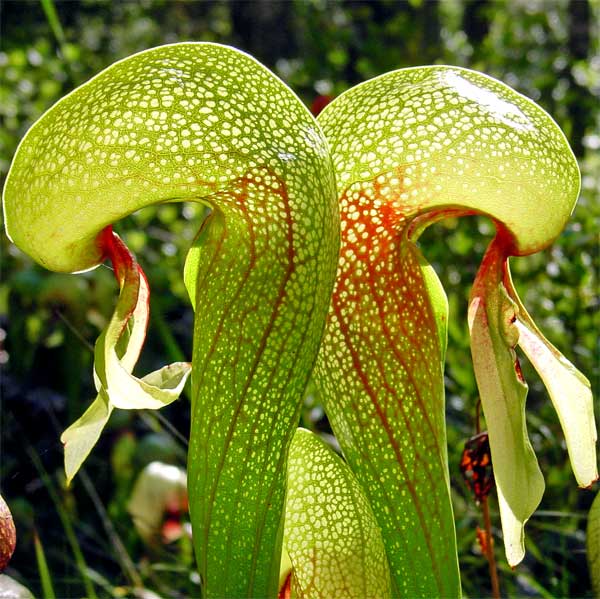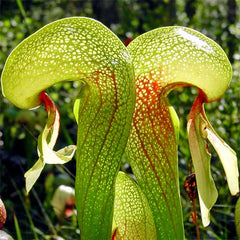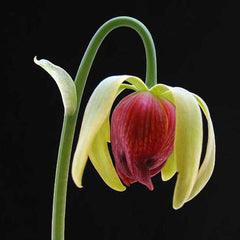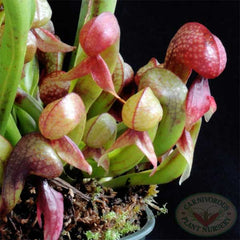
Cobra Lilies
Darlingtonia californica
Cobra Lilies are sometimes called Calf's Head, California Pitcher Plant or Cobra Plant. They are native to the northern mountains of California and the Oregon coast. They typically grow in serpentine soils along cold water mountain streams or seeps. It is a perennial, long lived, evergreen with runners producing numerous offshoots, creating dense colonies. The carnivorous leaves appear as hollow, twisting tubes up to 20+ inches (53+cm) in height. They can develop nice red color in full sun. The hood is bulbous with many translucent areolas or windows. There is a small opening underneath for prey to enter. A mustache-like appendage hangs from the hood. This gives the top of the trap a cobra snake-like look with a forked tongue ready to strike. The first two pitchers of the season are usually the largest and typically point North/South. The third and fourth pitchers are smaller and point East/West. Traps can have a sweet aroma. The flowers somewhat resemble those of the eastern Pitcher Plants, like a downward bending green and red daffodil, but with petals and ovaries that are quite different. Sepals are yellow green and petals are rufous colored. Seeds are hairy and if fresh, relatively easy to propagate. Stratification is required.
D. californica is a monospecific genus, like Dionaea (Venus Flytrap), having only 1 species in the Genus. It was named by John Torrey in 1853 to honor Dr. William Darlington, a physician botanist from Birmingham, Pennsylvania. The plant has woody rhizomes and readily forms clumps of 3 to 16 individual leaves or pitchers, some of which can reach 3.5 feet (1m) or more. The pitchers are more complex than Sarracenia. There is a bulbous upper portion with a small opening behind fang-like projections. Prey is drawn into the trap by translucent "windows" that appear to provide an exit out, but in fact, lure the prey into the depths of the tubular pitchers. Downward pointing hairs and a waxy, slippery inner surface, cause the prey to slip deeper and deeper where they become lodged in and die of exhaustion and starvation. D. californica is incapable of producing the digestive enzymes typical of most pitcher plants. It relies on the mutualistic relationship of arthropods to break down its food. Nutrients are released from the rotting insect corpses, dissolved into the fluid and absorbed by the plant.
Cobra Lilies may be propagated from seed sown on damp peat in light, or more easily from divisions of plantlets along the runners. See here for more growing tips.




